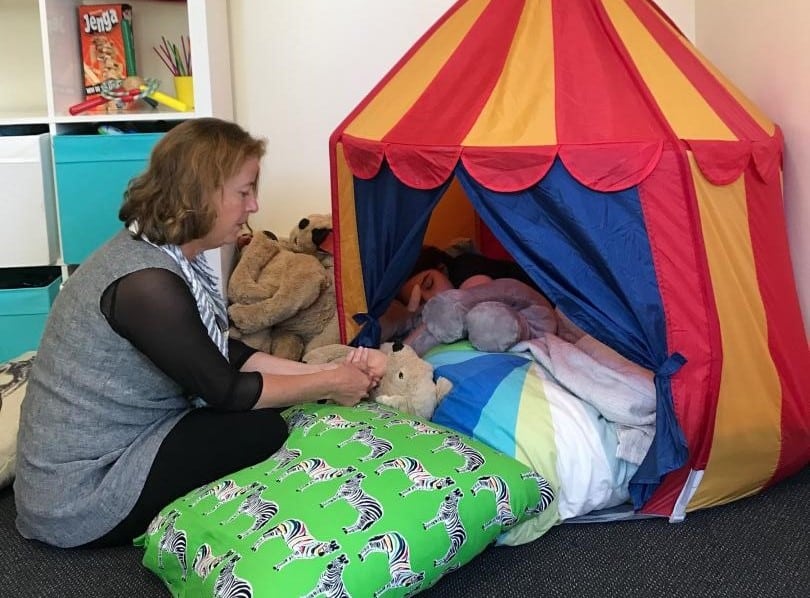
Autism Reframe Technique (A.R.T.) in Action
Holly says,
Most often kids and adults with autism don’t know what this soft state even feels like, so it is a big lesson even though it is subtle.

Holly says,
Most often kids and adults with autism don’t know what this soft state even feels like, so it is a big lesson even though it is subtle.
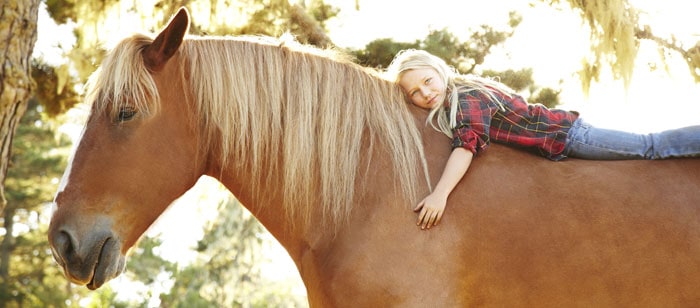
A few years ago, researchers demonstrated the therapeutic effect of horseback riding on social functioning in children with autism*. After twelve weeks of horseback riding intervention, 19 autistic participants exhibited ‘greater sensory seeking, sensory sensitivity, social motivation, and less inattention, distractibility, and sedentary behaviors’ than those on the wait-list (control).
Another study has shown that participants’ interacting with dogs have ‘improved prosocial behaviors and reduced non-social behaviors such as stimming’ (Marten and Farnam 2002).
The results suggest that horseback riding and dog therapy may be viable options in treating those with autism… but why?
The Polyvagal Theory, developed by Dr. Stephen Porges, is the only theory so far that is capable of explaining why.
Becoming popular in psychological trauma circles The Polyvagal Theory and autism has yet to be taken up by the autism community, but it provides a comprehensive and simple explanation of autism and anxiety.
Dr Porges shows that when you are in a state of flight/fight/ or immobilization, that you physically have limited access to your ‘social engagement system’ – your eyes, ears and voice do not work so well when you are in a heightened, sympathetic state. When you are in a state of FFI your body is focused on survival and it is triggered into a shut-down mode. In order to reverse the ‘shut-down’, you need to get your body back into a parasympathetic state; you need to feel safe, to be soothed.
Dogs and horses can help to relax and soothe the autistic child and allow for the social engagement system to re-engage. Over time this can help to reinforce a new baseline for the child’s nervous system, so that the child can regularly get used to being in a calmer, more parasympathetic state.
*Journal of Autism and Developmental Disorders September 2009, Volume 39, Issue 9, pp 1261-1267
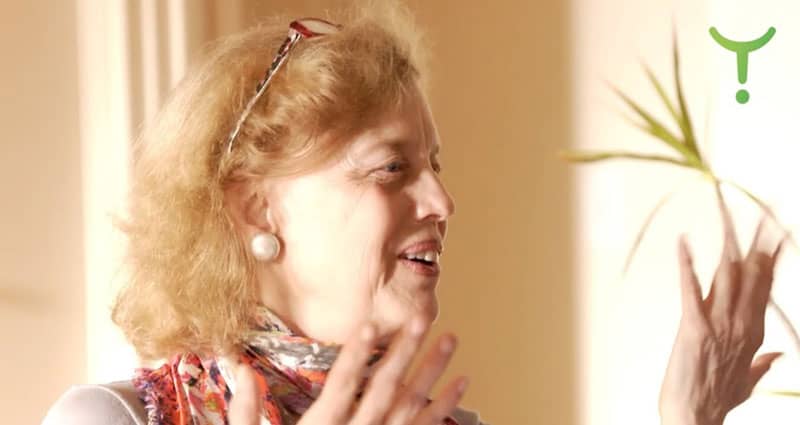
I recently listened to a wonderful talk by Pat Ogden on Sensorimotor Psychotherapy and it aligns so well with my approach – which is of course so different from most.
So often, well-meaning people take an approach with autism that has a directive undertone of ‘I know best’; ‘you need to learn as I see fit’.
They know how to take an approach that says ‘you are whole’; and ‘I know you have the answers inside you’ with the general population, but when they work with those on the autism spectrum that courtesy is not afforded.
Body Sensation
What I see in my work is that people on the spectrum begin to blossom when you deal with their organic, body sensation; when you alleviate the organic , learnt sensation – just as Pat Ogden is describing in her more psychotherapeutic approach. And you cannot account for the direction of that growth. It is just that – organic. It is an offence to the inherent integrity of the person in front of you to think you know what that the type and extent of growth will be.
My work is sometimes not taken seriously by professionals in Australia, (perhaps not understood?) and this is often from people who take an approach that is, I suggest, opposite to this. They think at base that people on the spectrum need to learn, but what I see is that they learn very, very well when they feel safe, when they feel well met and when their body system is alleviated.
What is happening is that, at a grass roots level, people are starting to gravitate to what they see to be true. Therein lies the potential for real change.
Image: Pat Ogden
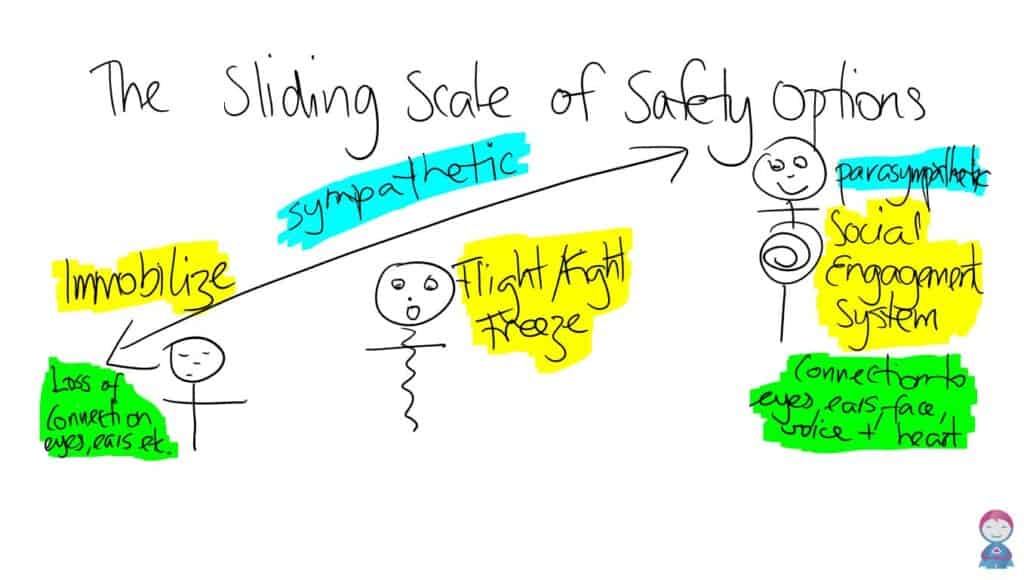
For those with anxiety (and more) I find it is very helpful for them to see that this ‘happens to them’, rather than it being a brain aberration or deficit that they are forever stuck with.
It is useful to people to discover, in a way they can easily grasp, that the body finds it difficult to process sensory information when it is in an extreme state.
Resilience
It is not outcomes focused, it is a blend of cognition, curiosity, permission and personal authority guided by the therapist.

Hyperbaric oxygen therapy is thought to improve certain traits of autism such as communication, social skills and eye contact. It involves breathing in up to 100% oxygen in a pressurized chamber to boost oxygen in the brain and reduce brain inflammation. An increase in oxygen may promote a parasympathetic state which in turn promotes a stronger connection between the social engagement and the vagal system.
However the dramatic nature of the autism oxygen therapy may have an opposite effect as it may be threatening and disturbing to the child and does not include any integrated learning so that the child cannot learn to develop an awareness and ability to reduce their own heightened vagal state.
In rare circumstances there have been reports of ear and eye issues such as middle ear fluid and barotraumas, transitory shortsightedness and sinus problems.
There is no evidence for this as a therapy for ASD and the distress and dangers to the patient make it not worth the risk. There are many safer ways to calm the vagal system and reinvigorate the social engagement system.
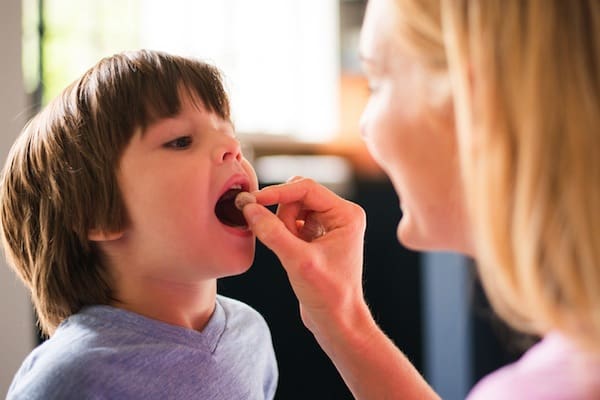
Vitamins play a vital role in our health and wellbeing. They help us to make skin and teeth and bones and to repair and replenish. We need a regular intake of vitamins to stay healthy and we do this through the food we eat and sometimes with vitamin supplements.
Parents often add vitamin supplements to the diet of their children, but this needs to be done with the supervision of a health professional so that the correct dosage is given. An excess of certain vitamins can be as damaging as a deficiency.
Recent Comments